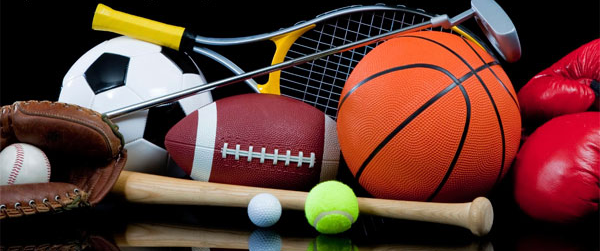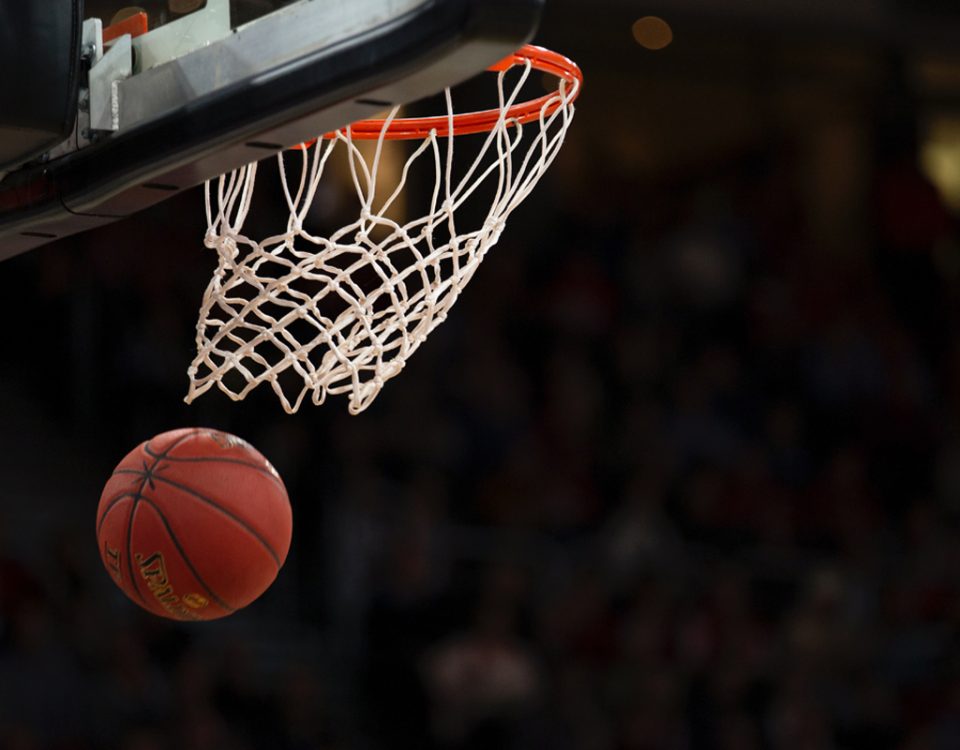
The NCAA Committee on Infractions Has Spoken: Young Harris College (Division II)
October 29, 2018
NCAA Division I Infractions Appeals Committee: University of Mississippi
November 9, 2018The NCAA Committee on Infractions (“Committee” or “Panel”) recently issued its findings and found that Charleston Southern University (“CSU” or “Institution”) committed violations of NCAA legislation. The violations in this case primarily involved improper certification and impermissible use of book scholarships at CSU. Those violations provided the underlying support for a failure to monitor violation. The case also involved Level III violations in two other areas: maintaining declaration of playing seasons and annually certifying compliance with NCAA legislation. The Panel considered this case through the cooperative summary disposition process in which all parties agreed to the primary facts and violations, as fully set forth in the summary disposition report (“SDR”). The Panel accepted the self-imposed penalties for CSU but proposed additional penalties. CSU accepted the Panel’s proposed penalties. Therefore, there is no opportunity to appeal.
The Committee concluded that CSU committed the following violations:
Violations of NCAA Division I Manual Constitution 3.2.4.3 (2011-12 through 2014-15); and NCAA Division I Manual Bylaws 14.10.1 and 16.8.1.2 (2011-12 and 2012-13); 12.1.1.1.3 and 14.01.1 (2011-12 through 2014-15); 14.11.1 and 16.8.1.2 (2012-13); 14.1.7.1 and 14.1.7.2 (2012-13 and 2013-14); 14.4.3.2 (2012-13 through 2014-15); 14.9.1 and 14.10.1 (2013-14); 14.3.2.1.1 and 15.01.5 (2013-14 and 2014-15); 14.5.4.1 (2013-14, 2014-15 and 2016-17); 16.8.1 (2013-14 through 2016-17); 12.10.1 (2014-15); 12.11.1 (2014-15 through 2016-17); and 14.2.1, 14.2.2, 14.4.3.1.6, 14.4.3.2 and 14.5.5.1 (2015-16) (Level II)
The Institution and NCAA enforcement staff agreed that during the 2011-12 through 2016-17 academic years, the Institution improperly certified as eligible for practice and/or competition 55 student-athletes in 12 sports. As a result, the student-athletes practiced, competed, received athletically related financial aid and/or received actual and necessary expenses while ineligible or improperly certified.
During the 2011-12 through 2014-15 academic years, the institution permitted 33 student-athletes to practice, compete and receive actual and necessary expenses prior to verifying the student-athletes had received final academic and amateurism certification from the NCAA Eligibility Center. NCAA Constitution 3.2.4.3 and NCAA Bylaws 14.10.1 and 16.8.1.2 (2011-12 and 2012-13); 12.1.1.1.3 and 14.01.1 (2011-12 through 2014-15); 14.9.1 (2013-14); 16.8.1 (2013-14 and 2014-15); and 12.10.1 (2014-15).
During the 2013-14, 2014-15 and 2016-17 academic years, six two-year college transfer student-athletes who were qualifiers, competed and received actual and necessary expenses while ineligible due to not successfully meeting applicable transfer eligibility requirements. NCAA Bylaws 14.10.1 (2013-14); 14.5.4.1 and 16.8.1 (2013-14, 2014-15 and 2016-17); and 12.11.1 (2014-15 and 2016-17).
Between the 2013-14 and 2014-15 academic years, one student-athlete practiced and received athletically related financial aid and one student-athlete practiced, competed and received actual and necessary expenses while certified as non-qualifiers. NCAA Bylaws 14.10.1 (2013-14) and 14.3.2.1.1, 15.01.5 and 16.8.1(2013-14 and 2014-15).
During the 2015 fall semester, two student-athletes competed and received actual and necessary expenses without having designated a program of studies leading toward a specific baccalaureate degree program at the beginning of their fifth semester of enrollment. NCAA Bylaws 12.11.1, 14.4.3.2 and 16.8.1(2015-16).
During the 2015 fall semester, one four-year college transfer student-athlete competed and received actual and necessary expenses in his first year in residence at the institution, without having satisfied any four-year transfer exception. NCAA Bylaws 12.11.1, 14.5.5.1, 16.8.1(2015-16).
During the 2012, 2013 and 2015 fall semesters, one student-athlete practiced and competed and three student-athletes practiced, competed and received actual and necessary expenses without maintaining enrollment in a minimum full-time program of studies leading to a baccalaureate or equivalent degree. NCAA Bylaws 14.11.1 and 16.8.1.2 (2012-13); 14.1.7.1 and 14.1.7.2, (2012-13 and 2013-14); 14.10.1 (2013-14); 16.8.1 (2013-14 and 2015-16); and 12.11.1, 14.2.1 and 14.2.2 (2015-16).
During the 2012-13 through 2014-15 academic years, seven student-athletes competed and received actual and necessary expenses while ineligible due to not successfully meeting the percentage-of-degree requirements. [NCAA Bylaws 14.11.1 and 16.8.1.2 (2012-13); 14.4.3.2 (2012-13 through 2014-15); 14.10.1 (2013-14); 12.11.1 (2014-15); and 16.8.1 (2013-14 and 2014-15)]
During the 2015 fall semester, one football student-athlete competed and received actual and necessary expenses during the first four contests while ineligible due to not successfully completing at least nine-semester hours during the 2014 fall semester. NCAA Bylaws 12.11.1, 14.4.3.1.6 and 16.8.1 (2015-16).
Violations of NCAA Division I Manual Bylaws 12.11.1, 15.01.2, 15.2.3, 16.8.1 and 16.11.2.1 (2014-15 and 2015-16) (Level II)
The Institution and NCAA enforcement staff agreed that during at least the 2014-15 and 2015-16 academic years, 34 student-athletes received impermissible benefits when the bookstore staff permitted the student-athletes to use their book scholarships to purchase items that were not required course-related books or required course supplies. The items included electronic devices, jewelry, apparel and assorted school supplies. The value of impermissible benefits for each student-athlete ranged between $100.00 and $922.00. The total amount of the impermissible benefits was approximately $11,962.00. As a result of the impermissible benefits, the student-athletes competed and received actual and necessary expenses while ineligible.
Violations of NCAA Division I Constitution 3.2.4.15 (2012-13 through 2014-15); 3.2.4.14 (2015-16); and NCAA Division I Manual Bylaws 17.1.3 and 18.4.2.1-(d) (2012-13 through 2015-16) (Level III)
The Institution and NCAA enforcement staff agreed that during the 2012-13 through 2015-16 academic years, the Institution failed to maintain the written declarations of the Institution’s sports teams’ playing season in the athletics department prior to the beginning of the teams’ playing seasons and have the president certify the Institution’s annual compliance with NCAA legislation by completing the NCAA Council’s approved form by September 15.
Violations of NCAA Division I Constitution 2.8.1 (2011-12 through 2016-17) (Level II)
The Institution and NCAA enforcement staff agreed that the scope and nature of the violations set forth above demonstrated that from the 2011-12 through 2016-17 academic years, the Institution violated the NCAA principle of rules compliance when it failed to adequately monitor its athletics programs to ensure that it operated in compliance with NCAA legislation.
During the 2011-12 through 2016-17 academic years, the Institution failed to establish adequate eligibility certification policies and procedures to ensure a consistent and accurate process for certifying, monitoring and reviewing student-athlete eligibility. Also, the Institution failed to provide adequate rules education and training and sufficiently involve institutional staff members from departments outside of athletics in the eligibility certification process. NCAA Constitution 2.8.1 (2011-12 through 2016-17).
During the 2014-15 and 2015-16 academic years, the Institution failed to establish bookstore policies and procedures and provide adequate rules education to institutional staff members and bookstore personnel to ensure student-athletes’ use of book scholarships was consistent with NCAA rules. NCAA Constitution 2.8.1 (2014-15 and 2015-16).
Level III Violations: Violations of NCAA Division I Manual Constitution 3.2.4.15 (2012-13 through 2014-15); 3.2.4.14 (2015-16); and NCAA Division I Manual Bylaws 17.1.3 and 18.4.2.1-(d) (2012-13 through 2015-16)
From 2012-13 through 2015-16, CSU failed to maintain written declarations of its sports teams’ playing seasons prior to the start of the teams’ playing season in violation of Bylaw 17 requirements. Further, CSU agreed that during the same time period, its president failed to certify the Institution’s annual compliance by completing the required form by the legislated time period, violating Constitution 3 and Bylaw 18. Although the Panel noted that the substance of annual presidential and chancellor attestation is a topic of ongoing discussion, these violations resulted from CSU’s president failing to certify a form annually by September 15 that is required in order for institutional teams and student-athletes to be eligible for NCAA championship competition. Such administrative violations are seldom presented to the COI. See Pepperdine University (2012) and University of Tulsa (1992). Despite not often appearing in infractions cases, the conduct here is a violation, and the Panel accepted the parties’ proposal that the violations are Level III.
The Panel noted that greater emphasis on presidential attestation is one of the areas of ongoing reforms stemming from the Commission on College Basketball recommendations. The Commission report called for increased accountability for presidents and chancellors. The future substance of attestation violations and how those violations are processed, including appropriate level, in the infractions process should be clarified and defined. Moreover, one overarching principle is clear—the culture of compliance begins with an institution’s chief executive officer (“CEO”). An institution’s CEO must set the tone that compliance with NCAA rules is of paramount importance and dedicate the appropriate resources to ensuring that their institution meets the expectations of Division I membership.
Aggravating and Mitigating Factors in accordance with NCAA Bylaws 19.9.3 and 19.9.4
Aggravating Factors for the Institution
Multiple Level II violations by the institution. NCAA Bylaw 19.9.3-(g).
Mitigating Factors for the Institution
Prompt acknowledgement, acceptance of responsibility and imposition of meaningful corrective measures and/or penalties. NCAA Bylaw 19.9.4-(b).
Absence of prior Level I, Level II or Major infractions committed by the institution. NCAA Bylaw 19.9.4-(h).
As a result of the foregoing, the Committee penalized CSU as follows:
- Public reprimand and censure.
- Probation: Two years of probation from October 16, 2018 through October 15, 2020.
- Financial penalty: The Institution shall pay a fine of $5,000.00 plus one-half of one percent of the athletics department budget to the NCAA.17
- Scholarship reductions: During the 2019-20 and 2020-21 academic years, CSU shall reduce by a total of 10 percent the amount of grants-in-aid awarded in the football program. The reductions shall be based on the average amount of aid awarded in the football program over the past four academic years, which CSU reported to be 60.13 equivalencies. Therefore, CSU shall reduce football equivalencies by a total of six equivalencies and shall not exceed 57.13 equivalencies for the 2019-20 and 2020-21 academic years.
- Vacation of Records: CSU acknowledged that ineligible participation occurred as a result of the violations in this case. Therefore, pursuant to Bylaws 19.9.7-(g) and 31.2.2.3, CSU shall vacate all regular season and conference tournament records and participation in which ineligible student-athletes detailed in this case competed from the time they became ineligible through the time they were reinstated as eligible for competition. This order of vacation includes all regular season competition and conference tournaments.
- Reduce countable athletically related activities (CARA) in the football program from 20 hours to 16 hours for one week during the fall 2017 playing season.
For any questions, feel free to contact Christian Dennie at cdennie@bgsfirm.com.

